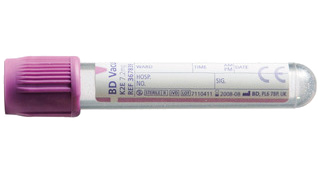@article{pmid37761886,
title = {A Homozygous Missense Mutation in a Doberman Pinscher Dog with Neurodegeneration, Cytoplasmic Vacuoles, Autofluorescent Storage Granules, and an α-Mannosidase Deficiency},
author = {Garrett Bullock and Gary S Johnson and Savannah G Pattridge and Tendai Mhlanga-Mutangadura and Juyuan Guo and James Cook and Rebecca S Campbell and Charles H Vite and Martin L Katz},
doi = {10.3390/genes14091746},
issn = {2073-4425},
year = {2023},
date = {2023-08-01},
urldate = {2023-08-01},
journal = {Genes (Basel)},
volume = {14},
number = {9},
abstract = {A 7-month-old Doberman Pinscher dog presented with progressive neurological signs and brain atrophy suggestive of a hereditary neurodegenerative disorder. The dog was euthanized due to the progression of disease signs. Microscopic examination of tissues collected at the time of euthanasia revealed massive accumulations of vacuolar inclusions in cells throughout the central nervous system, suggestive of a lysosomal storage disorder. A whole genome sequence generated with DNA from the affected dog contained a likely causal, homozygous missense variant in that predicted an Asp104Gly amino acid substitution that was unique among whole genome sequences from over 4000 dogs. A lack of detectable α-mannosidase enzyme activity confirmed a diagnosis of a-mannosidosis. In addition to the vacuolar inclusions characteristic of α-mannosidosis, the dog exhibited accumulations of autofluorescent intracellular inclusions in some of the same tissues. The autofluorescence was similar to that which occurs in a group of lysosomal storage disorders called neuronal ceroid lipofuscinoses (NCLs). As in many of the NCLs, some of the storage bodies immunostained strongly for mitochondrial ATP synthase subunit c protein. This protein is not a substrate for α-mannosidase, so its accumulation and the development of storage body autofluorescence were likely due to a generalized impairment of lysosomal function secondary to the accumulation of α-mannosidase substrates. Thus, it appears that storage body autofluorescence and subunit c accumulation are not unique to the NCLs. Consistent with generalized lysosomal impairment, the affected dog exhibited accumulations of intracellular inclusions with varied and complex ultrastructural features characteristic of autophagolysosomes. Impaired autophagic flux may be a general feature of this class of disorders that contributes to disease pathology and could be a target for therapeutic intervention. In addition to storage body accumulation, glial activation indicative of neuroinflammation was observed in the brain and spinal cord of the proband.},
keywords = {},
pubstate = {published},
tppubtype = {article}
}



